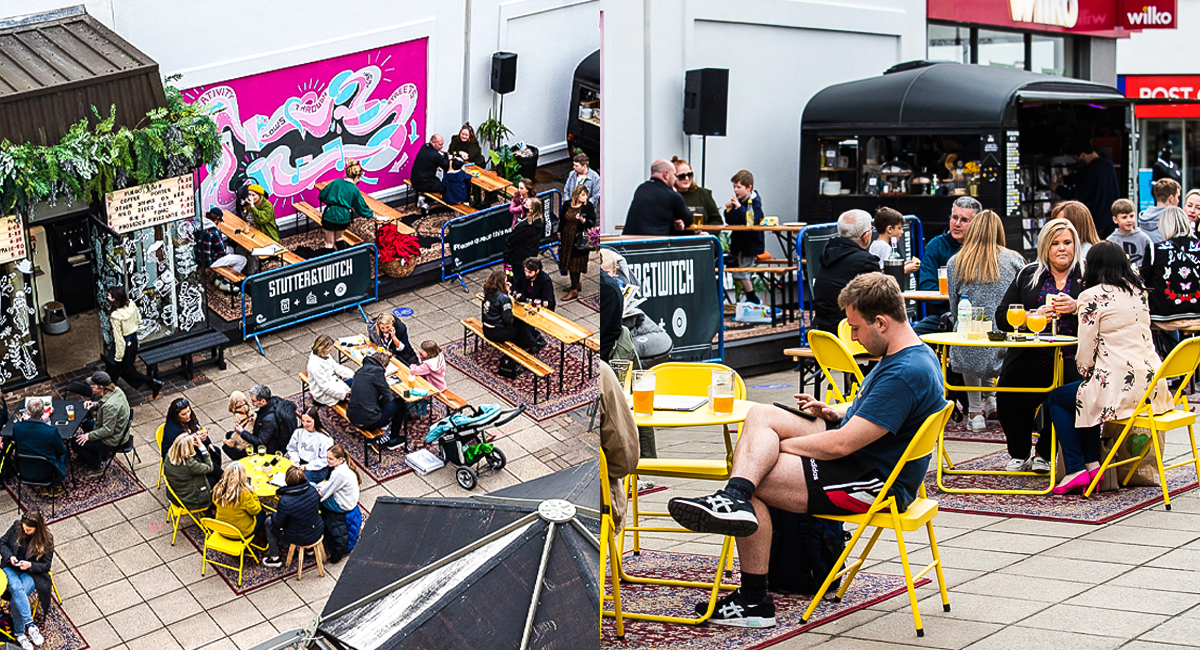
I don’t know why, but when I called in for a preview of the much, much delayed Brutal exhibition at the Saul Hay Gallery the words of a song began to rattle round my head.
They were the words of a band and movement that split opinion seismically. Much like the architectural movement that inspired this particular show.
And these days, much of the cast concrete brutalist architecture of the 50s and 60s is lost and empty, whilst some buildings have become iconic and sought after dwellings.

A city of Brutalist gems
Some are pretty, some are pretty vacant, pretty vacant.
The work on show at Saul Hay interprets both the beauty and ugliness of concrete through the eyes and sensibility of five artists.
That’s not, of course, to say that any of the work itself is ugly. As always the quality and mix of pieces are a delight. It’s just that there couldn’t be a more diverse view (in artistic terms) of the same subject as demonstrated, for example, by William Braithwaite’s physical concrete casts alongside Dan Broughton’s two dimensional and delicately painted architectural abstraction. Same building genre, two viewpoints.

Dan Broughton
Now Ian Hay, Director of the Saul Hay gallery, told me when we first met a couple of years ago that the first artist to agree to show in his new gallery was Mandy Payne.
It’s taken a couple of years (plus another because of lockdown) for Mandy’s work to finally appear in the Castlefield space. But here’s another iteration of the subject. Because Mandy actually paints onto concrete panels.

Mandy Payne
I think I can safely say that I have never seen concrete used as a base board for any painting, but of course this is fascinatingly apt for a show named Brutal. The panels are quite small – I had only seen them in print and online before – but as Ian said with a smile, if they were big they’d take some ingenious hanging.
And the fact that the spray paint and oil do cover the material means that it’s not immediately apparent what the base is.

Mandy Payne
But there is a fascination in the technique that totally suits Mandy’s passion for the regeneration of inner-city environments and urban communities. The almost stark composition of the paintings adds to a haunting quality of loneliness.
Let’s contrast that to Emma Bennett’s graphic interpretation of brutalist, modernist architecture.

Emma Bennett
There’s no quality of loneliness in Emma’s analytically stripped down acrylic paintings on birchwood panels. Paintings which somehow work as a group, as a composition in their own right.
They are as stark as Mandy’s observation of the built environment as can be imagined, given the subject matter, but visually a total contrast. But then that’s the fascination of art is it not?

Jen Orpin
And so I’ve already mentioned the word loneliness. Jen Orpin’s beautiful portrayal of light in what could be described as Manchester’s concrete urban jungle – ‘the dark gritty corners of the urban environment’ as she describes it – bring an artist’s observations to life in oil on board.

Jen Orpin
But, as with every piece in Brutal and perhaps what’s somehow most notable in Jen’s paintings is the absence of people. It all somehow makes for a scary and disquieting view of the concrete environment that we have around us as a legacy of the 20th century. It’s all a little scary, pretty scary.
……………………………
Brutal is on view at the Saul Hay Gallery until June 6th and thankfully no appointments are necessary to call in and appreciate an exhibition with one subject, but five viewpoints.

